![]()
![]()
![]()
Use LEFT and RIGHT arrow keys to navigate between flashcards;
Use UP and DOWN arrow keys to flip the card;
H to show hint;
A reads text to speech;
32 Cards in this Set
- Front
- Back
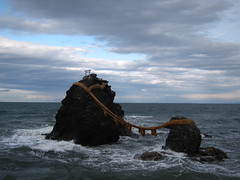
|
Wedded Rocks. Futamigaura, Ise-Shima National Park
Rock symbolizes the relationship between Japan's creation deities.
Husband Rock features a Torii. |
|
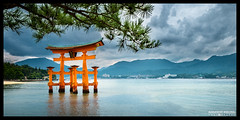
|
Torii
A gate that marks the entrance to a Shinto Shrine. |
|
|
Izanagi |
Male deity from Japanese creation myth. |
|
|
Izanami |
Female deity from Japanese creation myth. |
|
|
Shinto |
"The way of the Gods" - Originally functioned without scriptures. - Japan's native religion. - Emphasis on rituals. - Harmonious relationship with nature. - Kami that exist in nature. |
|
|
Amaterasu |
Sun goddess born from Izanagi's left eye.
The imperial family are direct descendants.
Emperor is considered to be a kami.
|
|
|
Shinto Worship |
Kamidana: "kami shelf" place of worship at home.
Holds the names of deceased ancestors/statues of deities.
Purify, present offering, clap hands to announce presence, say prayers. |
|
|
Shinto Shrines |
Kami are worshiped in wooden structures that express the Shinto practice of veneration of nature. |
|
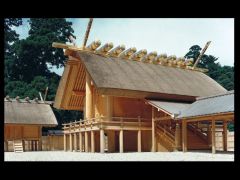
|
Main Hall, Inner Shrine
Island of Honshu
Isa-jingu, Mie perfecture
Rebuilt 2013
Houses kami of Amaterasu |
|
|
Ikebana |
"The way of flowers"
a disciplined art form in which nature and humanity are brought together |
|
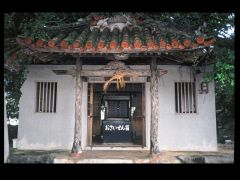
|
Sacred Grove
Miyako Island, Okinawa
Intrinsic beauty of natural materials, natural asymmetry, and handcrafted items.
The rope = wedded rocks |
|
|
Jomon |
14,000-300 BCE |
|
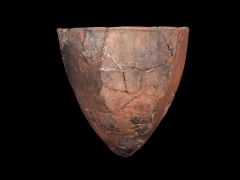
|
Vessel
Jomon culture
12,000 BCE
Low-fired clay
Hunter-gatherer society
Used coil-building technique |
|
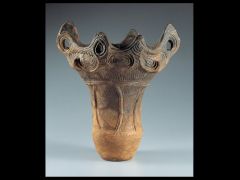
|
Vessel
Middle Jomon; more ornate
ca. 2500-1500 BCE
Low-fired clay
Abundance of clay vessels indicate an increase in population and a more sedentary lifestyle.
|
|
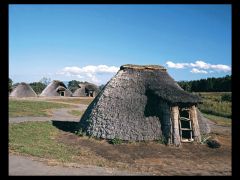
|
Reconstructed Jomon Pit Dwelling
Sannai Maruyama, Aomori City
Constructed of wood and covered with a thatched roof. |
|
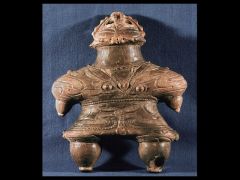
|
Figurine
Late Jomon
1500-1000 BCE
Low-fired clay
More sedentary society
Possibly a fertility figurine |
|
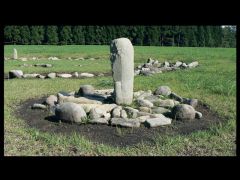
|
Nonakado Stone Circle
Late Jomon: 1500-1000 BCE
Oyu, Akita prefecture
Jomon people buried their dead. The stone circle marks a burial pit. |
|
|
Yayoi era |
300 BCE - 300 CE
Rice cultivation was introduced and became widespread. Hence the adoption of other more sedentary activities such as wheel pottery, cloth making, and metal working.
Societal hierarchies formed. |
|
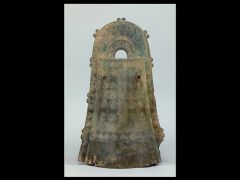
|
Dotaku
Late Yayoi: 2nd-3rd century CE.
Bronze
Ceremonial object; not a instrument. Though the concept of dotaku did evolve from Korean or Chinese bells.
Used in rites to promote soil fertility and the harmonious relationship between human and cosmos. |
|
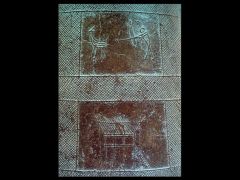
|
Detail of Dotaku
Yayoi: 100 - 300 CE
Bronze
Depicts hunting and agriculture scenes. |
|
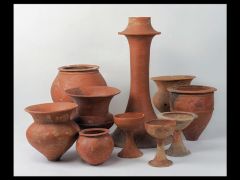
|
Pedestal and Assorted Vessels
Yayoi: 100 BCE - 100 CE
Painted earthenware
Produced using coil and wheel techniques. Emphasize smooth and thin walls, less decorative than Jomon ware |
|

|
Yayoi 1st - 3rd century
Terracotta
Some Yayoi ceramics where just painted with a layer of red paint. Others are incised with patterns. |
|
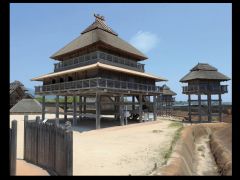
|
Yoshinogari
Discovered in 1986 in Kyshu.
From 1st - 3rd century
Ceremonial Hall.
Similar to design of Shinto Shrines |
|
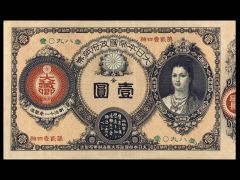
|
Banknote featuring Empress Jingu.
Conquered Korean kingdoms while pregnant with future emperor Ojin.
One of a few women to be depicted on a money. |
|
|
After Yayoi |
Konfu
300 - 552 CE |
|
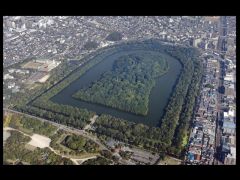
|
Tomb of Emperor Nintoku
Osaka
4th - 5th century
Shape similar to dotaku |
|
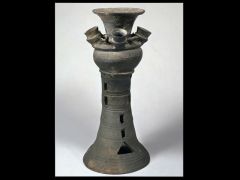
|
Sueki Vessel
Sueki ware; fine gray-green pottery
Kofun; 6th century
Hign-fired pottery, ash glaze. Popular pottery for the ruling classes. |
|
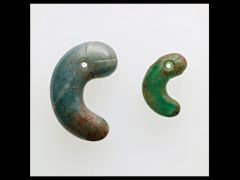
|
Magatama
Kofun; 5th - 6th century
Jadeite
Symbol of divine authority
Often found on Korean crowns from the period as well. |
|
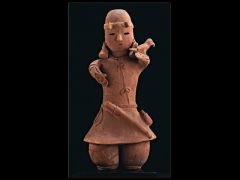
|
Haniwa Falconer
Konfu; 6th century
Terracotta
Pottery figures found in the slopes of leader's burial mounds.
Thought to either prevent the slopes from collapsing or to protect the site from evil spirits.
Very detailed |
|
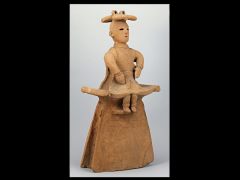
|
Haniwa Female Shaman
Kofun; 6th century
Terracotta
Rare. Her elaborate dress indicates high status, a show Korean trade influence. |
|
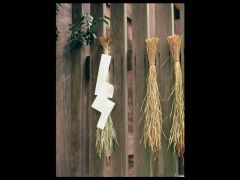
|
Offering to Kami at Ise-jingu, home of Amaterasu.
Paper symbolizes purity.
|
|
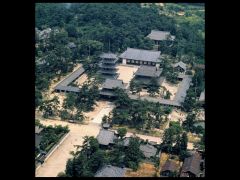
|
Horyu-Ji
Asuka perios; 6th century
Founded in 607. Caught fire in 670. Rebuilt in 6th century. |

